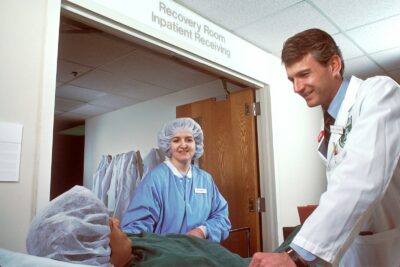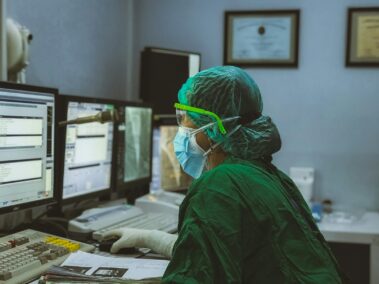The Power of Edge Computing in Transforming Healthcare Delivery
This article explores the profound impact of edge computing on healthcare, highlighting its potential to improve patient care, streamline operations, and drive innovation. Edge computing, the practice of processing data closer to its source rather than relying on distant cloud servers, is revolutionizing numerous industries. In the realm of healthcare, edge computing is emerging as a transformative force, empowering medical professionals with the ability to process and analyze data in real time.
Empowering Real-Time Decision-Making
In critical care scenarios, where every second counts, immediate access to patient data can be the difference between life and death. Edge computing enables healthcare providers to process data from medical devices and wearables in real time, right at the patient’s bedside or even within the device itself. This rapid data processing allows for immediate insights, enabling clinicians to make informed decisions swiftly, adjust treatment plans on the fly, and potentially save lives.
Enhancing Remote Patient Monitoring
Edge computing is a cornerstone of remote patient monitoring (RPM), a rapidly growing field that empowers patients to manage their health conditions from the comfort of their own homes. By processing data from wearable sensors and other connected devices at the edge, healthcare providers can monitor patients’ vital signs, track medication adherence, and detect early warning signs of deterioration. This proactive approach to care can reduce hospital readmissions, improve patient outcomes, and lower healthcare costs.
Improving Efficiency and Reducing Costs
In addition to enhancing patient care, edge computing can streamline healthcare operations and reduce costs. By processing data locally at the edge, healthcare organizations can reduce the burden on their network infrastructure and minimize the need for expensive data transfers to the cloud. This not only improves efficiency but also enhances data security and privacy, as sensitive patient information remains within the confines of the healthcare facility or the patient’s personal device.
Enabling Precision Medicine and Personalized Care
The advent of precision medicine, which tailors treatment plans to individual patients based on their unique genetic makeup and other factors, has the potential to revolutionize healthcare. Edge computing plays a crucial role in enabling precision medicine by facilitating the real-time analysis of genomic data, medical imaging, and other patient-specific information. This allows clinicians to develop personalized treatment plans that are more effective and have fewer side effects.
Empowering Telemedicine and Virtual Care
The COVID-19 pandemic has accelerated the adoption of telemedicine and virtual care, which rely on the seamless transmission and processing of medical data. Edge computing ensures low-latency communication and real-time data processing, enabling high-quality video consultations, remote diagnosis, and even virtual surgical procedures. This not only improves access to care for patients in remote or underserved areas but also reduces the risk of exposure to infectious diseases.
Fostering Innovation and Research
Edge computing is not just about improving existing healthcare practices; it is also about fostering innovation and research. By providing a platform for real-time data processing and analysis, edge computing empowers researchers to develop new diagnostic tools, therapeutic interventions, and predictive models. This can accelerate the pace of medical discovery and ultimately lead to better health outcomes for patients around the world.
Overcoming Challenges and Embracing the Future
While the potential of edge computing in healthcare is immense, there are challenges to overcome. Ensuring data security and privacy, managing a distributed infrastructure, and integrating edge devices with existing healthcare systems are all critical considerations. However, with careful planning and collaboration between healthcare providers, technology vendors, and regulatory bodies, these challenges can be addressed. As edge computing continues to evolve, it is poised to transform healthcare in ways we can only begin to imagine.
Embracing a New Era of Healthcare
The healthcare industry is on the cusp of a new era, one where edge computing plays a pivotal role in enhancing patient care, improving efficiency, and driving innovation. By harnessing the power of real-time data processing, healthcare providers can deliver more personalized, proactive, and effective care. As we move forward, embracing edge computing will be essential for healthcare organizations that want to remain competitive and provide the best possible care for their patients.
The Edge: Where Healthcare Meets Innovation
The future of healthcare lies at the edge, where data is processed in real time, decisions are made swiftly, and innovation thrives. By embracing edge computing, healthcare organizations can unlock a world of possibilities, from personalized treatment plans to remote monitoring and virtual care. The time is now for healthcare leaders to seize the opportunities presented by edge computing and pave the way for a brighter, healthier future.
#edgecomputing #healthcare #dataprecessing #patientcare #real-timeanalytics #medicaldevices #remotemonitoring #telemedicine #digitalhealth #precisionmedicine #virtualcare #innovation























